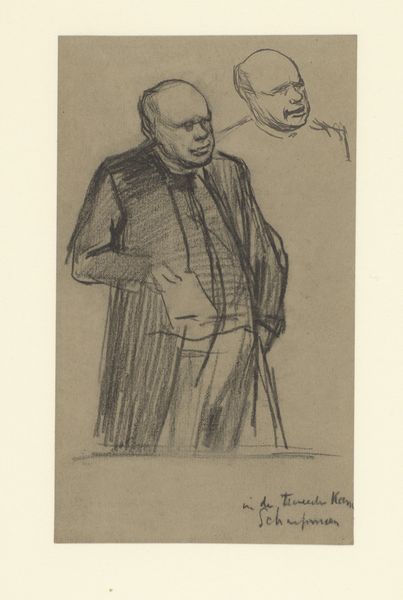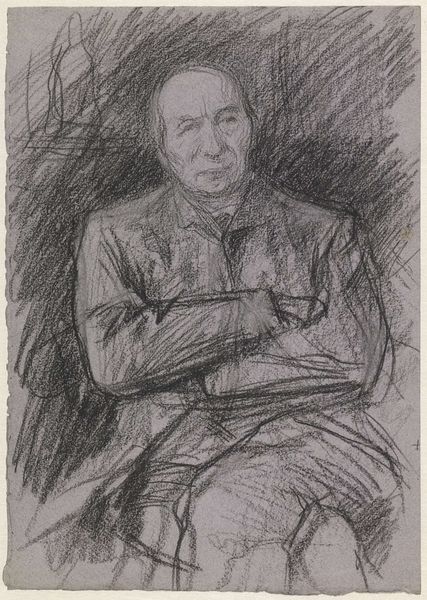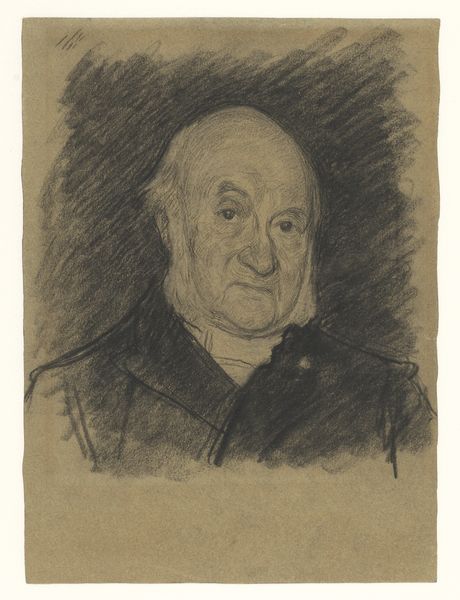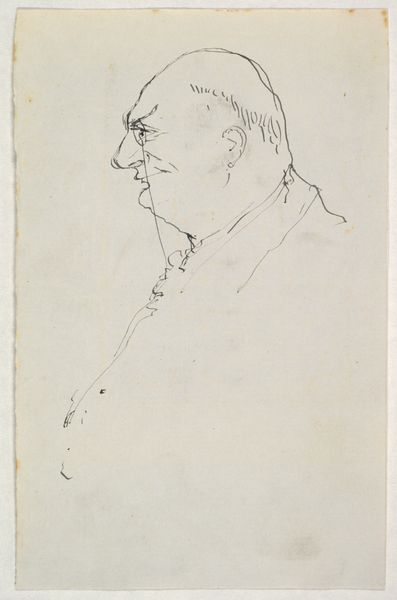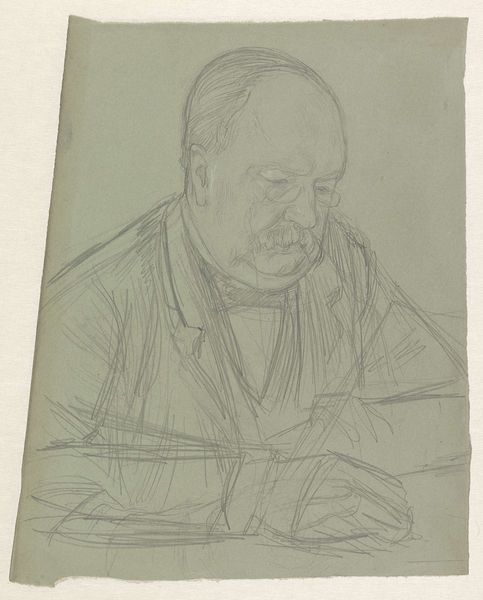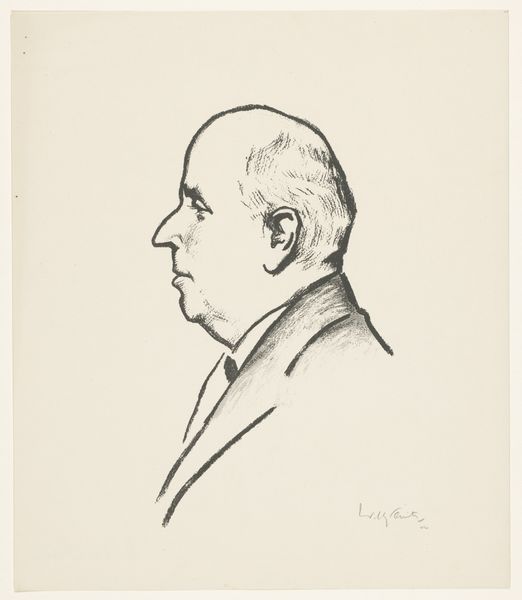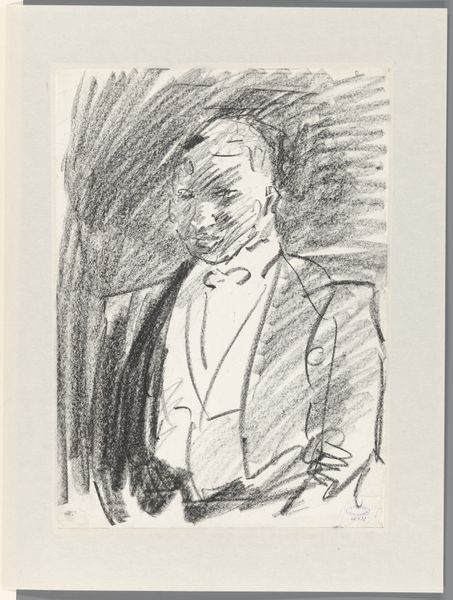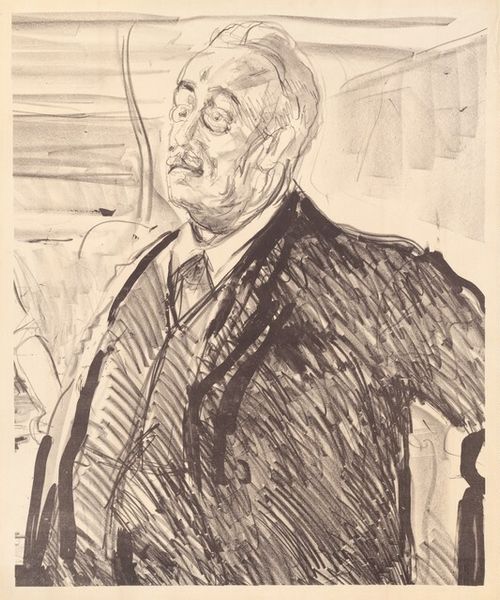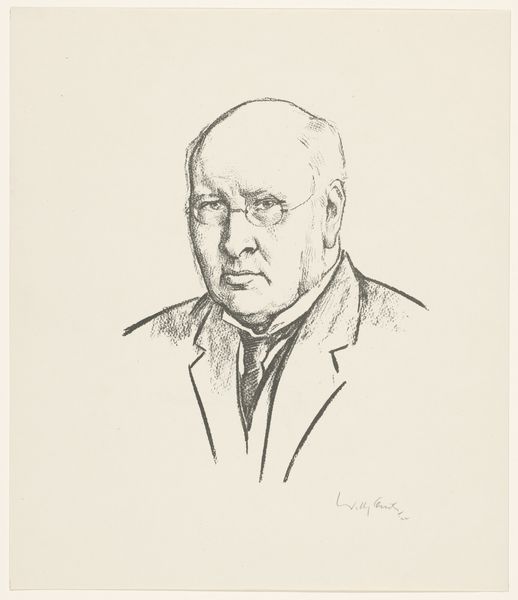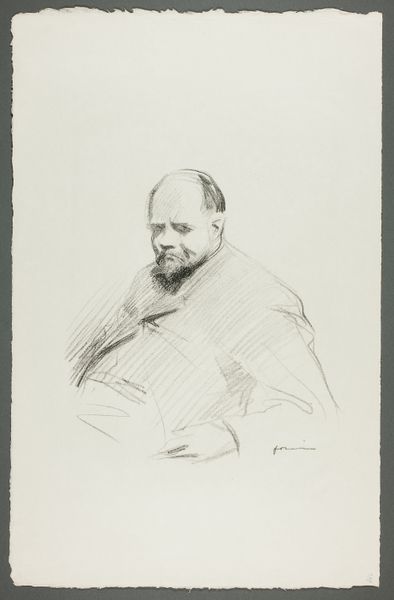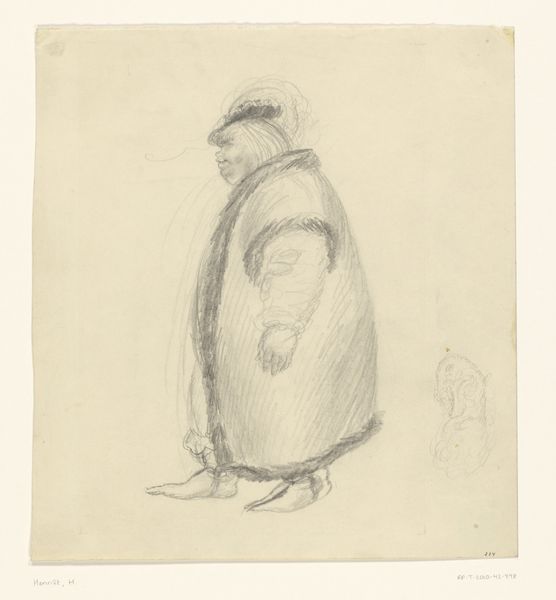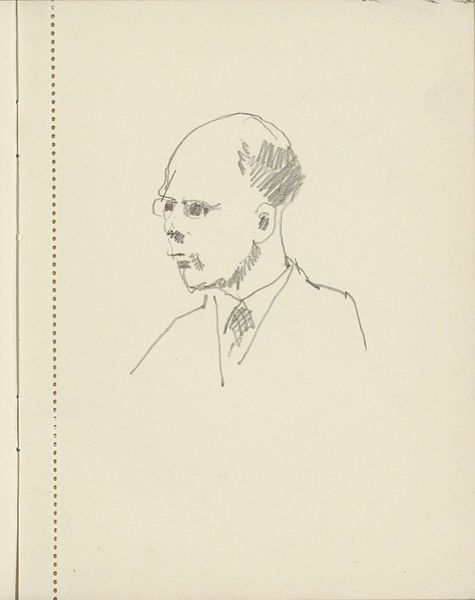
drawing, pencil
#
portrait
#
drawing
#
16_19th-century
#
pencil sketch
#
pencil
#
academic-art
#
realism
Dimensions: height 220 mm, width 145 mm
Copyright: Rijks Museum: Open Domain
Curator: Here we see a work titled "Dr. Schaepman in de Tweede Kamer," a pencil drawing created around 1887 by Pieter de Josselin de Jong. It’s currently held in the Rijksmuseum. What's your immediate take on it? Editor: There’s a real sense of gravity. Despite being a quick sketch, the figure exudes authority. The heavy lines suggest weight, both physical and metaphorical, as if he’s bearing the weight of political decisions. Curator: That’s a keen observation. Dr. Schaepman was indeed a significant figure, a Catholic priest and a member of the Dutch Parliament during a time of immense socio-political change. Considering the context of the late 19th century, Catholicism was navigating its place in the face of increasing liberalism and secularism. Editor: Right. So this image then becomes quite loaded. We see him holding papers, presumably notes for a speech or legislation. How do you see the drawing functioning within the visual culture and political landscape of the time? Curator: Josselin de Jong captured not just a likeness but the essence of Schaepman’s political power. Images like these played a crucial role in shaping public perception. It subtly presents Schaepman as a figure of strength and intellect within the Catholic community. The sketch becomes part of a larger visual strategy employed by religious groups to assert their place in the modern nation-state. It speaks to a discourse of identity, showing Catholics carving out space within Dutch politics. Editor: I’m struck by the economy of line. The artist captured so much with so few strokes. You can almost feel the tension in the room, the anticipation of a crucial debate. And how might this resonate today, reflecting on how political power is visualized? Curator: I agree, the sparseness enhances the sense of importance. Now, in terms of contemporary resonances, this image prompts us to consider the ongoing dialogues between religious identity and political representation. Who holds power, who is represented, and how these depictions either reinforce or subvert the status quo remain critical questions. Editor: Absolutely. It reveals the continued power of portraits to signify power and advocate for marginalized communities. Well, thank you, this sketch provides a fascinating glimpse into a crucial moment of negotiation of religious, national, and individual identity. Curator: It has been insightful, this artwork urges us to critically examine the relationships between art, power, and social identity in our present times.
Comments
No comments
Be the first to comment and join the conversation on the ultimate creative platform.
